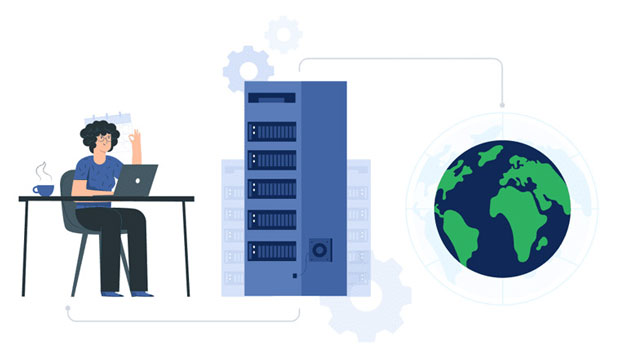Choosing between VPN services and free proxy servers with SOCKS5 support can be confusing, especially with the range of options available today. Both tools provide users with the ability to conceal their identity, bypass geo-restrictions, and maintain some level of privacy while browsing. However, they serve different purposes and come with unique advantages and disadvantages. To make an informed decision, it is essential to understand the core differences in functionality, security, speed, and reliability between VPNs and socks5 proxies, and to evaluate them based on your specific needs. This article will guide you through the key factors to consider when choosing between these two options. Understanding the Basics: VPN vs. socks5 proxyBefore diving into the selection process, it’s important to first understand what a VPN and SOCKS5 proxy are, as well as how they function.- VPN (Virtual Private Network): A VPN establishes a secure and encrypted connection between your device and a remote server, masking your IP address and routing all internet traffic through this secure tunnel. This results in improved privacy, data encryption, and the ability to bypass geo-restrictions and censorship. VPNs generally provide better security features, including encryption protocols like OpenVPN, IKEv2, and WireGuard.- SOCKS5 Proxy: A SOCKS5 proxy, on the other hand, acts as an intermediary between your device and the internet. It routes your internet traffic through a server, masking your IP address but without providing encryption for the data you transmit. While SOCKS5 offers greater anonymity by hiding your true location, it doesn't offer the same level of privacy or security as a VPN, because data is not encrypted.The primary difference between the two lies in the level of security and functionality. While a VPN encrypts all data traffic, a SOCKS5 proxy simply routes traffic through a server without encryption, focusing solely on anonymity and location masking.Key Factors to Consider When Choosing Between VPN and SOCKS5 ProxyNow that we have a basic understanding of each tool, let’s break down the key factors you should consider when deciding between a VPN and a free socks5 proxy.1. Security and Privacy- VPN: One of the most significant advantages of using a VPN is its strong encryption. VPN services typically use AES-256 encryption, which is virtually impossible to crack. This encryption protects your data from hackers, government surveillance, and any malicious actors who might attempt to intercept your internet traffic. Additionally, VPNs often come with features like kill switches and DNS leak protection, ensuring your real IP address remains hidden even if the connection drops unexpectedly.- SOCKS5 Proxy: SOCKS5 proxies, in contrast, do not offer any form of encryption. While they do a good job of hiding your IP address and masking your location, your data is not encrypted, which means that it could potentially be intercepted. This makes SOCKS5 proxies less suitable for activities requiring strong privacy, such as online banking or confidential communications.If your priority is security and privacy, a VPN is almost always the better choice. It provides end-to-end encryption, secure tunneling, and ensures that your personal information is safe from prying eyes.2. Speed and Performance- VPN: The encryption process in VPNs can slow down your internet connection, especially if the VPN server is located far away or if the encryption protocol is particularly resource-intensive. However, many premium VPN services invest in high-speed servers and advanced protocols to minimize this slowdown, making the impact on browsing speed less noticeable.- SOCKS5 Proxy: Because SOCKS5 proxies do not encrypt data, they usually offer faster speeds than VPNs. There is less overhead involved since the data is simply routed through the proxy server. This makes SOCKS5 proxies a better choice if you are primarily concerned with speed and are not as concerned about encryption. If you’re streaming content or engaging in activities that require low latency, a SOCKS5 proxy might be ideal.However, it is important to note that free proxies often suffer from slower speeds due to overcrowding and limited server resources, so choosing a reliable SOCKS5 proxy is crucial for maintaining performance.3. Anonymity and Location Masking- VPN: VPNs are excellent for maintaining anonymity and masking your IP address. By routing all your traffic through a VPN server, you appear to be located in a different region, bypassing geo-restrictions and censorship. Some VPNs also offer features like multi-hop connections, which route your traffic through multiple servers for an added layer of privacy.- SOCKS5 Proxy: SOCKS5 proxies also mask your IP address, making it appear as if you are browsing from a different location. However, they do not offer the same level of anonymity as VPNs because they do not hide other identifying data, such as DNS queries or your browsing history. While SOCKS5 proxies are effective at disguising your geographical location, they may not provide the same level of complete anonymity as a VPN.For tasks like bypassing regional content restrictions or appearing as if you are browsing from another country, both VPNs and SOCKS5 proxies work well. However, for enhanced anonymity, particularly in sensitive browsing scenarios, VPNs are typically more reliable.4. Compatibility and Use Cases- VPN: VPNs can be used for a wide range of activities, including browsing, online gaming, torrenting, and even accessing streaming services. Since they route all your traffic through a secure tunnel, they are particularly beneficial when privacy and data protection are critical. If you need a reliable and secure way to access content from any location while ensuring that your personal data is protected, a VPN is your best option.- SOCKS5 Proxy: SOCKS5 proxies are more suitable for specific tasks, like bypassing geo-blocked content or hiding your IP address while using specific applications. They are commonly used by people looking to mask their location when using P2P applications or torrenting, as they do not slow down the connection as much as VPNs do. However, if you need overall protection for all your internet traffic, a SOCKS5 proxy may not be sufficient.5. Cost and Accessibility- VPN: High-quality VPN services typically require a subscription, with prices varying based on features, server locations, and encryption protocols. While free VPN services are available, they often come with limitations, such as slower speeds, fewer servers, and fewer security features. Free VPNs may also compromise your privacy by logging user data or showing intrusive ads.- SOCKS5 Proxy: Many SOCKS5 proxies are available for free, though their reliability and security can vary widely. Free proxies may be slower, less stable, and more prone to data interception. Premium SOCKS5 proxies are available for a fee and typically offer faster speeds and more reliable connections. However, they still lack the security features of a VPN.Conclusion: Which One is Right for You?The decision between a VPN and a SOCKS5 proxy ultimately comes down to your needs. If you are primarily concerned with security, privacy, and overall internet traffic protection, a VPN is the better choice. It provides encryption, a secure connection, and a wide range of uses across different activities.On the other hand, if speed is your primary concern and you don’t require encryption, a SOCKS5 proxy can be a viable option. It is ideal for tasks that involve location masking and anonymity without the need for encryption, such as streaming or torrenting.Remember that free services, whether VPN or proxy, often come with trade-offs in terms of speed, security, and reliability. If privacy and security are a top priority, investing in a reliable, paid service may be the best way to go. Always evaluate your needs carefully before choosing the tool that best aligns with your online activities.
Jan 07, 2025
![arrow]()



























































